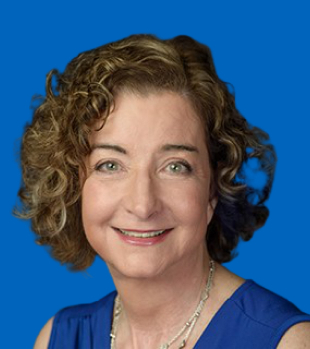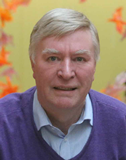
Maurice Hugh Frederick Wilkins was a New Zealand-born British biophysicist and Nobel laureate whose research spanned multiple areas of physics and biophysics, contributing to the scientific understanding of phosphorescence, isotope separation, optical microscopy and X-ray diffraction, and to the development of radar. He is best known for his work at King's College London on the structure of DNA.
In UK politics, the Parliamentary Labour Party (PLP) is the parliamentary group of the Labour Party in Parliament, i.e. Labour MPs as a collective body. Commentators on the British Constitution sometimes draw a distinction between the Labour Party and the Conservative and Liberal parties. The term Parliamentary Labour Party refers to the party in Parliament, whereas the term Labour Party refers to the entire Labour Party, the parliamentary element of which is the PLP.
The British Science Association (BSA) is a charity and learned society founded in 1831 to aid in the promotion and development of science. Until 2009 it was known as the British Association for the Advancement of Science (BA). The current Chief Executive is Katherine Mathieson. The BSA's mission is to get more people engaged in the field of science by coordinating, delivering, and overseeing different projects that are suited to achieve these goals. The BSA "envisions a society in which a diverse group of people can learn and apply the sciences in which they learn." and is managed by a professional staff located at their Head Office in the Wellcome Wolfson Building. The BSA offers a wide variety of activities and events that both recognize and encourage people to be involved in science. These include the British Science Festival, British Science Week, the CREST Awards, Huxley Summit, Media Fellowships Scheme, along with regional and local events.

Hugh Esmor Huxley MBE FRS was a British molecular biologist who made important discoveries in the physiology of muscle. He was a graduate in physics from Christ's College, Cambridge. However, his education was interrupted for five years by the Second World War, during which he served in the Royal Air Force. His contribution to development of radar earned him an MBE.

The MIT Department of Physics has over 120 faculty members, is often cited as the largest physics department in the United States, and hosts top-ranked programs. It offers the SB, SM, PhD, and ScD degrees. Fourteen alumni of the department and nine current or former faculty members have won the Nobel Prize in Physics.

Kenneth Stewart Cole was an American biophysicist described by his peers as "a pioneer in the application of physical science to biology". Cole was awarded the National Medal of Science in 1967.

Rudolf Podgornik is a physicist. His fields of research are: physics of soft matter, physics of Coulomb fluids, physics of macromolecular interactions, Lifshitz theory of Casimir - van der Waals dispersion interaction, Casimir effect, physics of membranes, polymers and polyelectrolytes and physics of DNA, RNA and viruses.
Nicolas Rashevsky was an American theoretical physicist who was one of the pioneers of mathematical biology, and is also considered the father of mathematical biophysics and theoretical biology.
Sir John Turton Randall, was an English physicist and biophysicist, credited with radical improvement of the cavity magnetron, an essential component of centimetric wavelength radar, which was one of the keys to the Allied victory in the Second World War. It is also the key component of microwave ovens.
Clara Franzini-Armstrong is an Italian-born American electron microscopist, and Professor Emeritus of Cell and Developmental Biology at University of Pennsylvania.
The Australian Institute of Physics was established in 1963, when it replaced the Australian Branch of the British Institute of Physics based in London. The purpose of the institute is to further promote the development and application of the science of physics as well as providing support to physicists. The AIP publishes Australian Physics since 1963. Every two years, the Institute organises a national congress, the latest being held in December 2014 at the Australian National University in Canberra.
The European Biophysical Societies' Association is an association existing to promote Biophysics in Europe and to disseminate "knowledge of the principles, recent developments and applications of biophysics, and to foster the exchange of scientific information among European biophysicists and biophysicists in general".
Harrison McAllister Randall was an American physicist whose leadership from 1915 to 1941 brought the University of Michigan to international prominence in experimental and theoretical physics.

Laura H. Greene is the Marie Krafft Professor of Physics at Florida State University and Chief Scientist at the National High Magnetic Field Laboratory. She was previously a professor of physics at the University of Illinois at Urbana-Champaign. In September 2021, she was appointed to the President's Council of Advisors on Science and Technology (PCAST).

Anthony Watts is a British biochemist and Professor of Biochemistry at the University of Oxford and C W Maplethorpe Fellow in Biological Sciences and tutor at St. Hugh's College, Oxford. He is a fellow of the Royal Chemical Society, the Institute of Physics, Royal Society of Biology and Biophysical Society. He was managing director of the European Biophysics Journal, and is a co-opted member of the European Biophysical Societies' Association (EBSA), chair of the British Biophysical Society and chair of the Scientific Committee for the IUPAB/EBSA/BBS/IoP Biophysics congress, 2017. He was President of EBSA (2017-2019) and elected President-elect of IUPAB in 2021.
Ponnuraj Karthe is an Indian structural biologist and a professor and the head of the Department of Crystallography and Biophysics of the University of Madras. He is known for his research in the fields of structural biology and drug designing. His studies have been documented by way of a number of articles and Google Scholar, an online repository of scientific articles has listed 46 of them. Besides, he has contributed chapters to books edited by others and has delivered invited speeches at many seminars which include the Workshop on Advances in Computer Aided Drug Design held in August 2010 at the University of Madras. He was a member of the national organizing committee of the Annual Conference of Indian Biophysical Society - Molecular Architecture, Dynamics and Assem, organized by Saha Institute of Nuclear Physics and serves as a member of the national committee of the International Union for Pure and Applied Biophysics (IUPAB) as well as the executive council of the Bioinformatics and Drug Discovery Society (BIDDS), a non governmental organization promoting dissemination of knowledge in the fields of bioinformatics, biological sciences and other life sciences. The Department of Biotechnology of the Government of India awarded him the National Bioscience Award for Career Development, one of the highest Indian science awards, for his contributions to biosciences, in 2010.
Progress in Biophysics and Molecular Biology is a peer-reviewed scientific journal publishing review articles in the fields of biophysics and molecular biology. It was established in 1950 as Progress in Biophysics and Biophysical Chemistry, obtaining its current title in 1963.
Olwyn Byron is a British physicist who is Professor of Biophysics at the University of Glasgow and Chair of the British Biophysical Society. She was a member of the Physics of Life UK Network steering group who were awarded the 2020 Institute of Physics Rosalind Franklin Medal and Prize.






